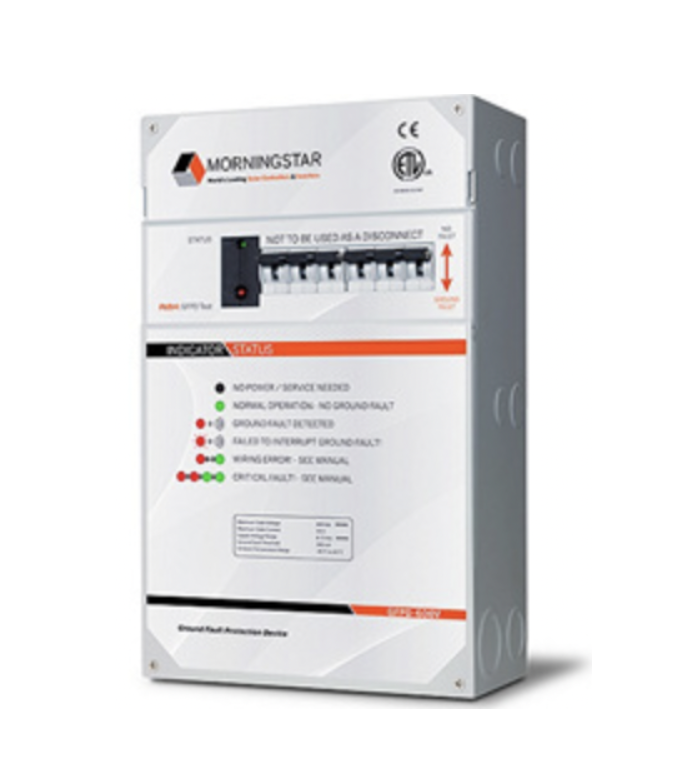Solar Ground Fault Protection

Lightning is a common cause of failure in off-grid solar systems. Most often damage does not occur as a result of a direct hit, but from nearby hits. A nearby hit can induce thousands of volts into a solar system if not protected. A ground hit can also spread out and travel into buried conductors, such as buried cables and pipes. Grounding is the most fundamental technique for protection against lightening damage. A lightning surge cannot be stopped, but a direct path to ground that bypasses equipment can be accomplished. In addition to grounding, specialized surge protection devices are recommended for sites that are on high ground in severe lightning areas, that are on dry, poorly conductive soil or that have wire runs longer than 100 feet.
Solar ground fault protection devices are used for ground fault detection and interruption for on-grid and off-grid solar systems. It is designed to prevent current from following unintended paths during a ground fault. The ground fault protection device needs to detect any stray current and interrupt the circuit until safe operation can be restored. A current imbalance between the positive and negative conductors entering the controller or inverter may indicate a ground fault. The ground fault protection device must isolate the array from the battery and loads, while maintaining the bond to ground.
How Solar Power Works in Industrial Applications
A basic solar setup includes:
- Solar panels. The solar panel is going to absorb sunlight and convert that sunlight into energy.
- Charge controllers. The charge controller is going to direct the energy that's absorbed by the solar panel to specific locations.
- Batteries. A battery stores energy that is absorbed by the solar panel when it is not being used by the electrical load.
- Inverters. An inverter takes DC power and converts it to AC power for use in homes or businesses.
The solar panel is absorbs sunlight and converts that sunlight into energy, in this case, DC power. That energy is going to be transferred over to the charge controller, which dictates where that energy actually goes. The charge controller is going to be wired to both the battery and it's also going to be wired to an electrical load. The charge controller will monitor the energy that is coming off of the solar panel and determine where that power is needed. For instance, if power is needed for an electrical load, it will send power in that direction. If there's no power that's needed for that electrical load, it will send power to the battery to store for later use. In the case where there is no need for power at the electrical load and the battery is full, the charge controller will dissipate that energy in the form of heat. In other applications, an inverter may be used in a solar setup. The inverter works by drawing energy, DC power, from the solar panel. It converts that energy into AC power, which can then be used in homes and businesses.

